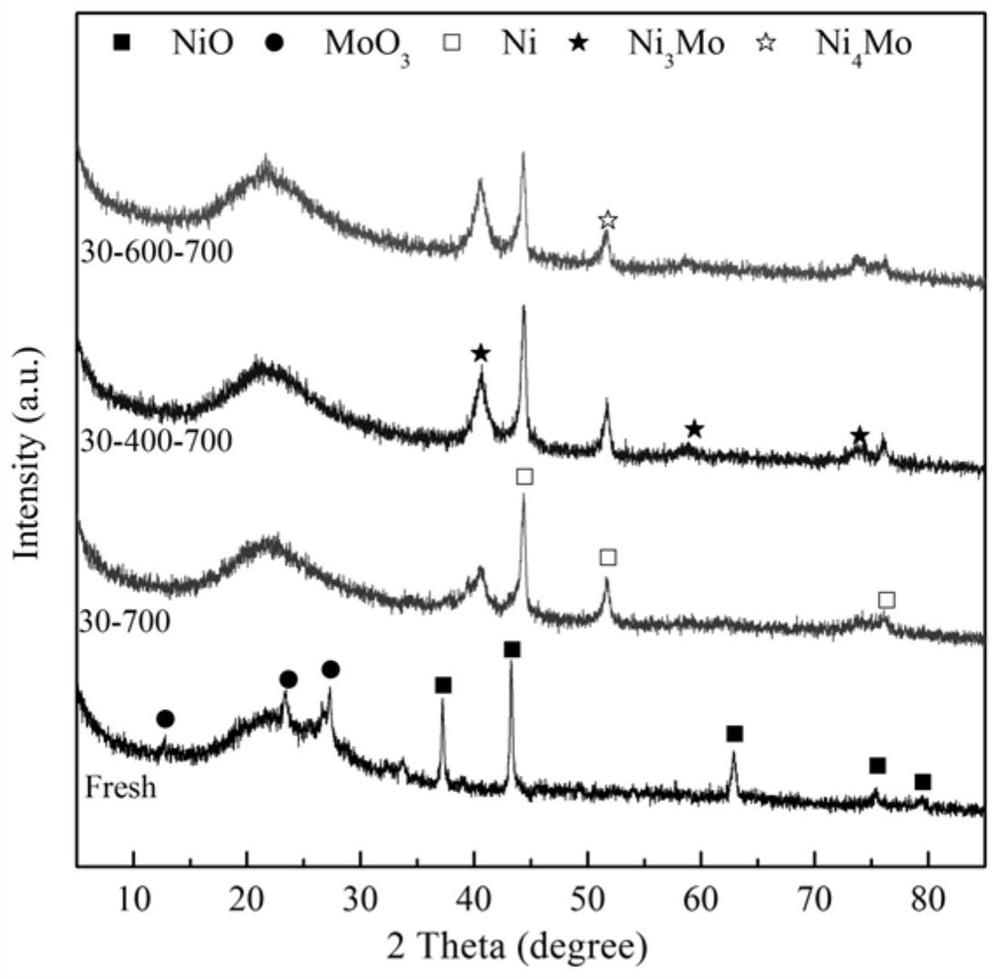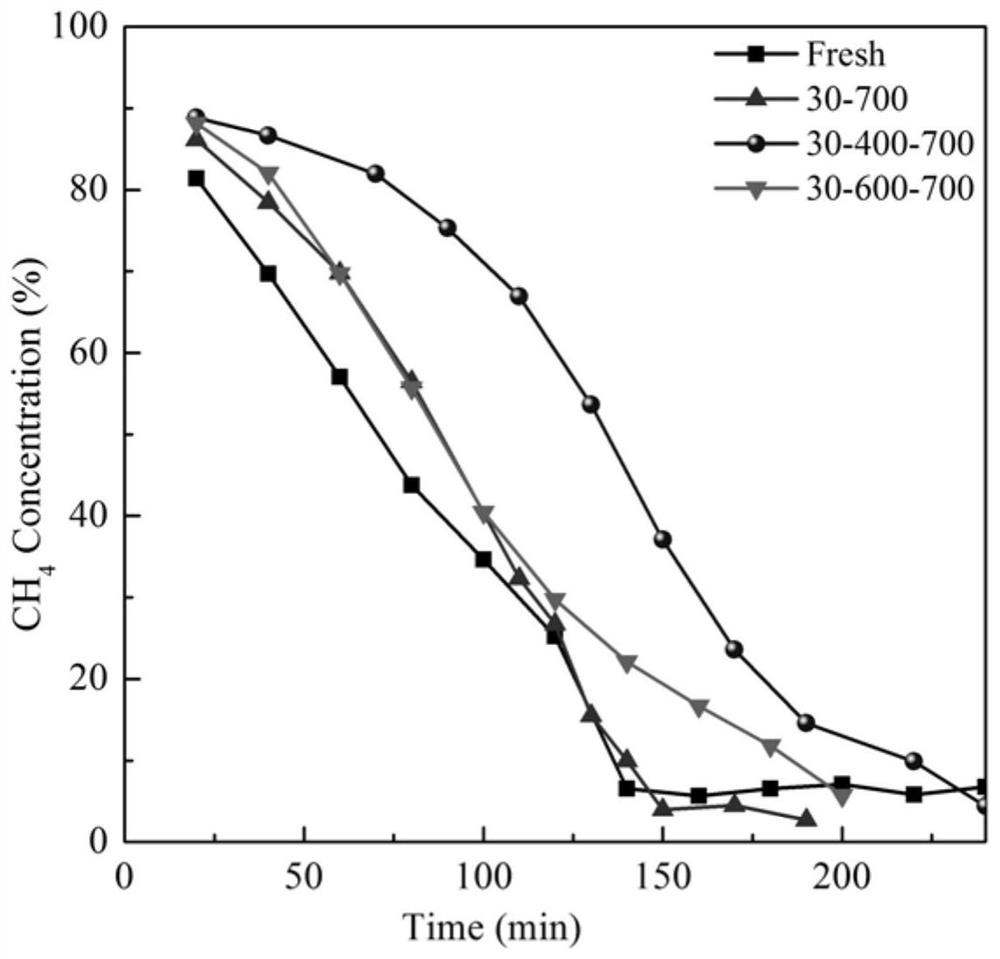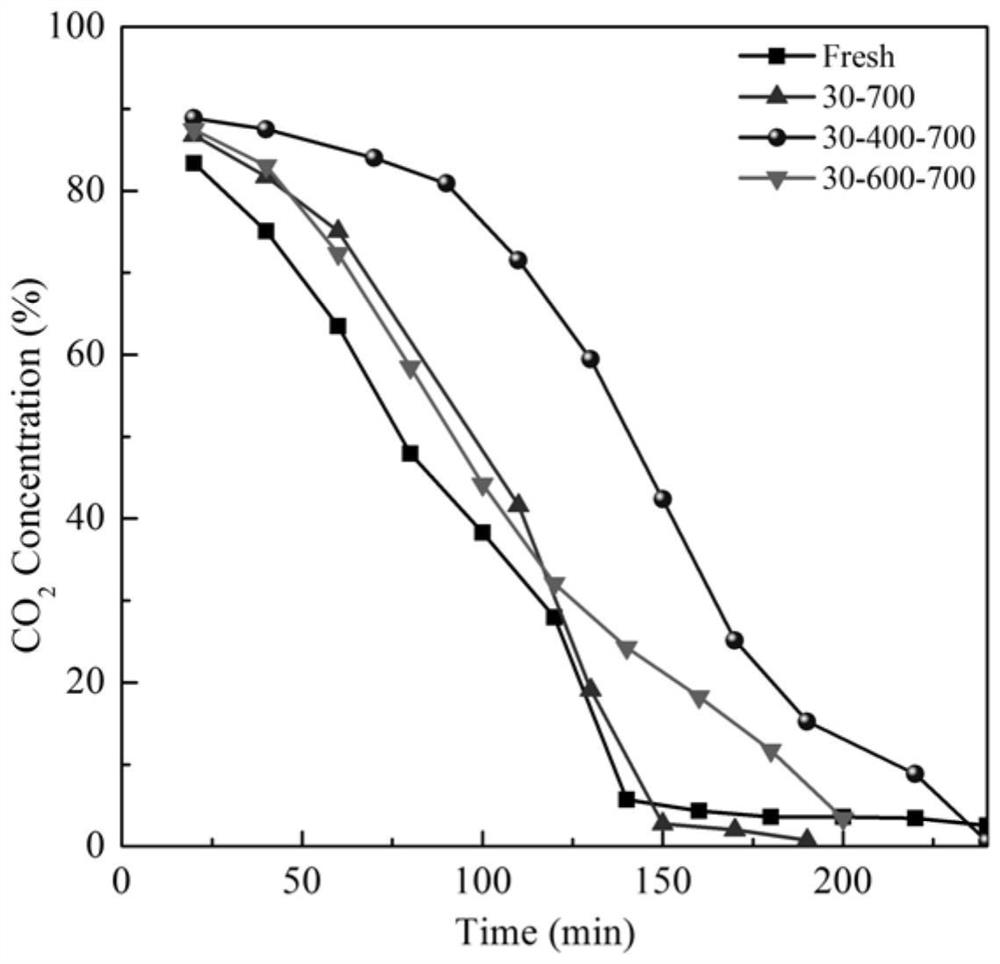Preparation and reforming methods of catalyst for hydrogen production by reforming light alkane and application of catalyst
A technology for reforming hydrogen and low-carbon alkanes, applied in catalyst activation/preparation, chemical instruments and methods, metal/metal oxide/metal hydroxide catalysts, etc., can solve environmental pollution and other problems, and achieve simple treatment methods , improve the utilization rate, and have good application prospects
- Summary
- Abstract
- Description
- Claims
- Application Information
AI Technical Summary
Problems solved by technology
Method used
Image
Examples
Embodiment 1
[0034] A method for preparing a catalyst for hydrogen production by reforming low-carbon alkane, comprising the following steps:
[0035] (1) Use a 40-mesh sieve to screen the microsphere silica gel to make it uniform in particle size; put the screened microsphere silica gel into a nitric acid solution with a concentration of 34% and soak for 9 hours; obtain the obtained microsphere silica gel after washing with deionized water Dry in an oven at 110°C for 12 hours, bake in a muffle furnace at 550°C for 3 hours, and cool naturally to room temperature to obtain SiO 2 carrier;
[0036] (2) 0.91g Ni(NH 3 ) 6 Cl 2 ·6H 2 O was dissolved in 3.5ml of deionized water, the pH was adjusted to 11 with ammonia water, and then 2g of SiO was added 2 Carrier, after stirring for 5 minutes, 41kHz ultrasonic for 10 minutes, then put it in a 110°C oven for 12 hours, then put it in a 550°C muffle furnace for 3 hours and cool to room temperature to get the catalyst Ni / SiO 2 ;
[0037] (3) 0....
Embodiment 2
[0040] A method for preparing a catalyst for hydrogen production by reforming low-carbon alkane, comprising the following steps:
[0041] (1) Use a 60-mesh sieve to screen the microsphere silica gel to make it uniform in particle size; put the screened microsphere silica gel into a nitric acid solution with a concentration of 34% and soak for 9 hours; obtain the obtained microsphere silica gel after washing with deionized water Dry in an oven at 180°C for 12 hours, bake in a muffle furnace at 500°C for 3 hours, and cool naturally to room temperature to obtain SiO 2 carrier;
[0042] (2) 0.91g Ni(NH 3 ) 6 Cl 2 ·6H 2 Dissolve O in 3.5ml deionized water, adjust the pH to 10 with ammonia water, then add 2g SiO 2 Carrier, stirred for 5 minutes, 50kHz ultrasonic for 8 minutes, then put it in a 120°C oven for 10 hours, then put it in a 500°C muffle furnace for 2 hours and cooled to room temperature to obtain the catalyst Ni / SiO 2 ;
[0043] (3) 0.46g (NH 4 ) 6 Mo 7 o 24 4H...
Embodiment 3
[0047] A method for preparing a catalyst for hydrogen production by reforming low-carbon alkane, comprising the following steps:
[0048] (1) Use a 50-mesh sieve to screen the microsphere silica gel to make it uniform in particle size; put the screened microsphere silica gel into a nitric acid solution with a concentration of 34% and soak for 9 hours; obtain the obtained microsphere silica gel after washing with deionized water Dry in an oven at 110°C for 12 hours, bake in a muffle furnace at 550°C for 3 hours, and cool naturally to room temperature to obtain SiO 2 carrier;
[0049] (2) 0.91g Ni(NH 3 ) 6 Cl 2 ·6H 2 O was dissolved in 3.5ml of deionized water, the pH was adjusted to 11 with ammonia water, and then 2g of SiO was added 2 The carrier, after stirring for 5 minutes, 50kHz ultrasound for 10 minutes, then put it in a 110°C oven for 12 hours after standing still for 9 hours, then put it in a 550°C muffle furnace for 3 hours and cool to room temperature to get the ...
PUM
 Login to View More
Login to View More Abstract
Description
Claims
Application Information
 Login to View More
Login to View More - R&D
- Intellectual Property
- Life Sciences
- Materials
- Tech Scout
- Unparalleled Data Quality
- Higher Quality Content
- 60% Fewer Hallucinations
Browse by: Latest US Patents, China's latest patents, Technical Efficacy Thesaurus, Application Domain, Technology Topic, Popular Technical Reports.
© 2025 PatSnap. All rights reserved.Legal|Privacy policy|Modern Slavery Act Transparency Statement|Sitemap|About US| Contact US: help@patsnap.com



